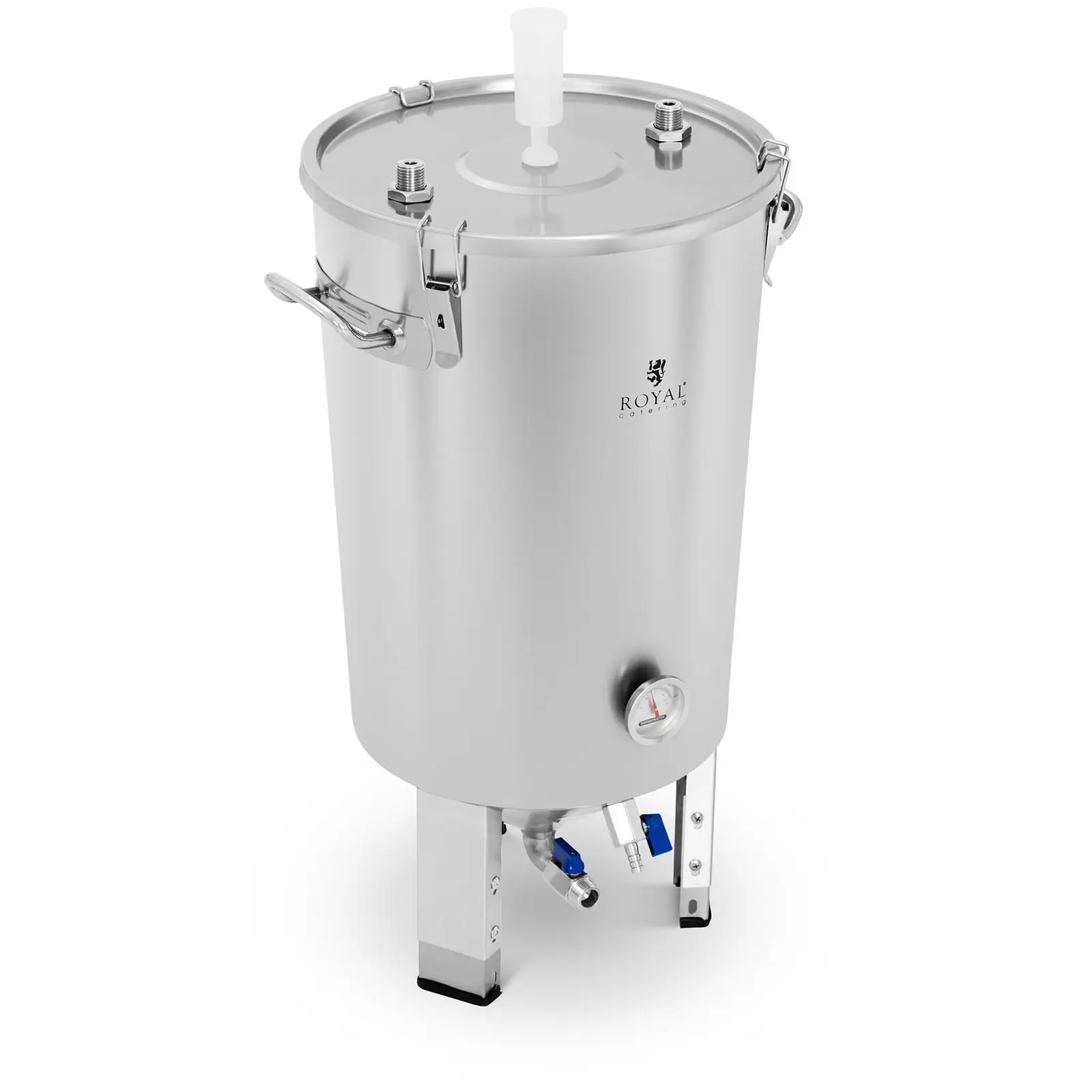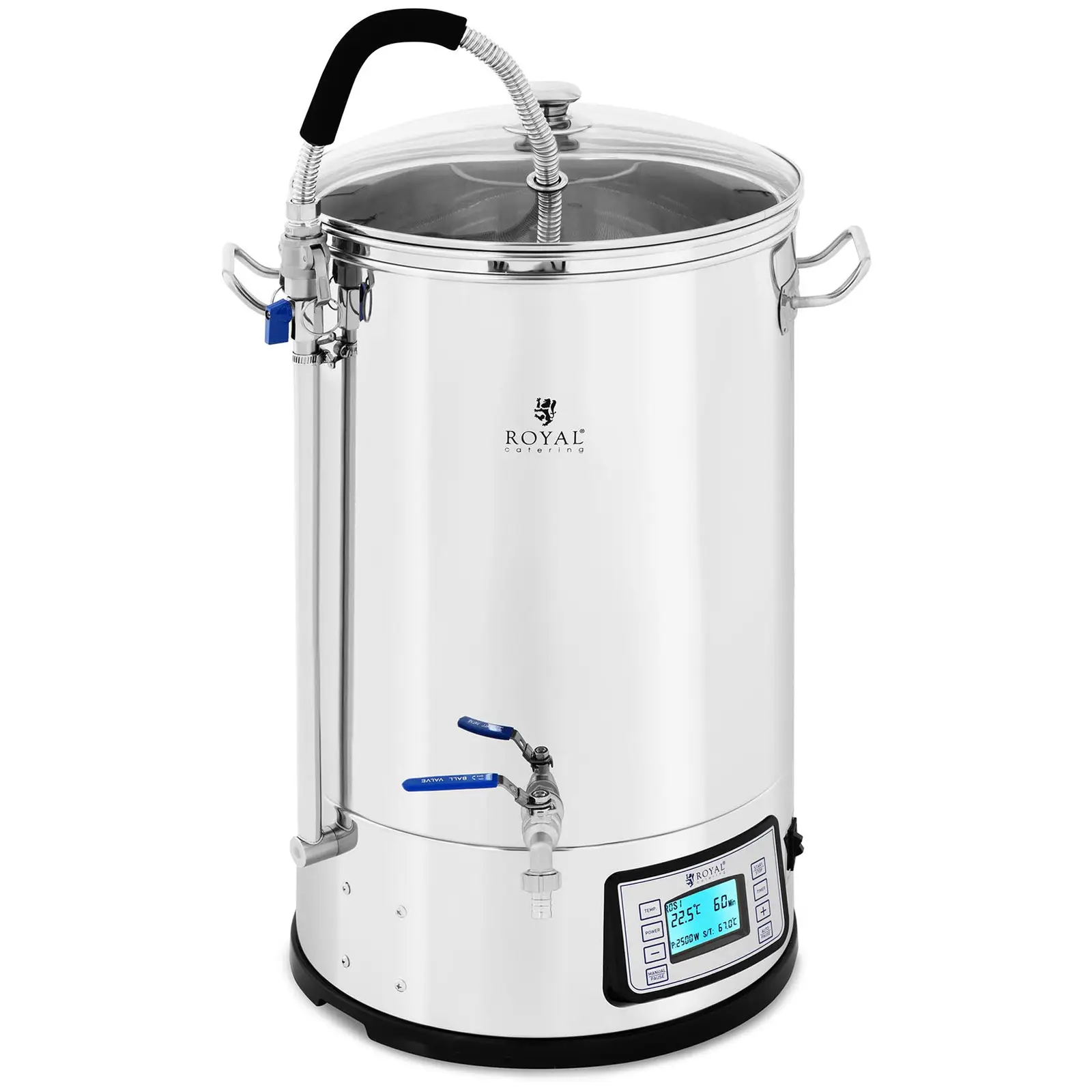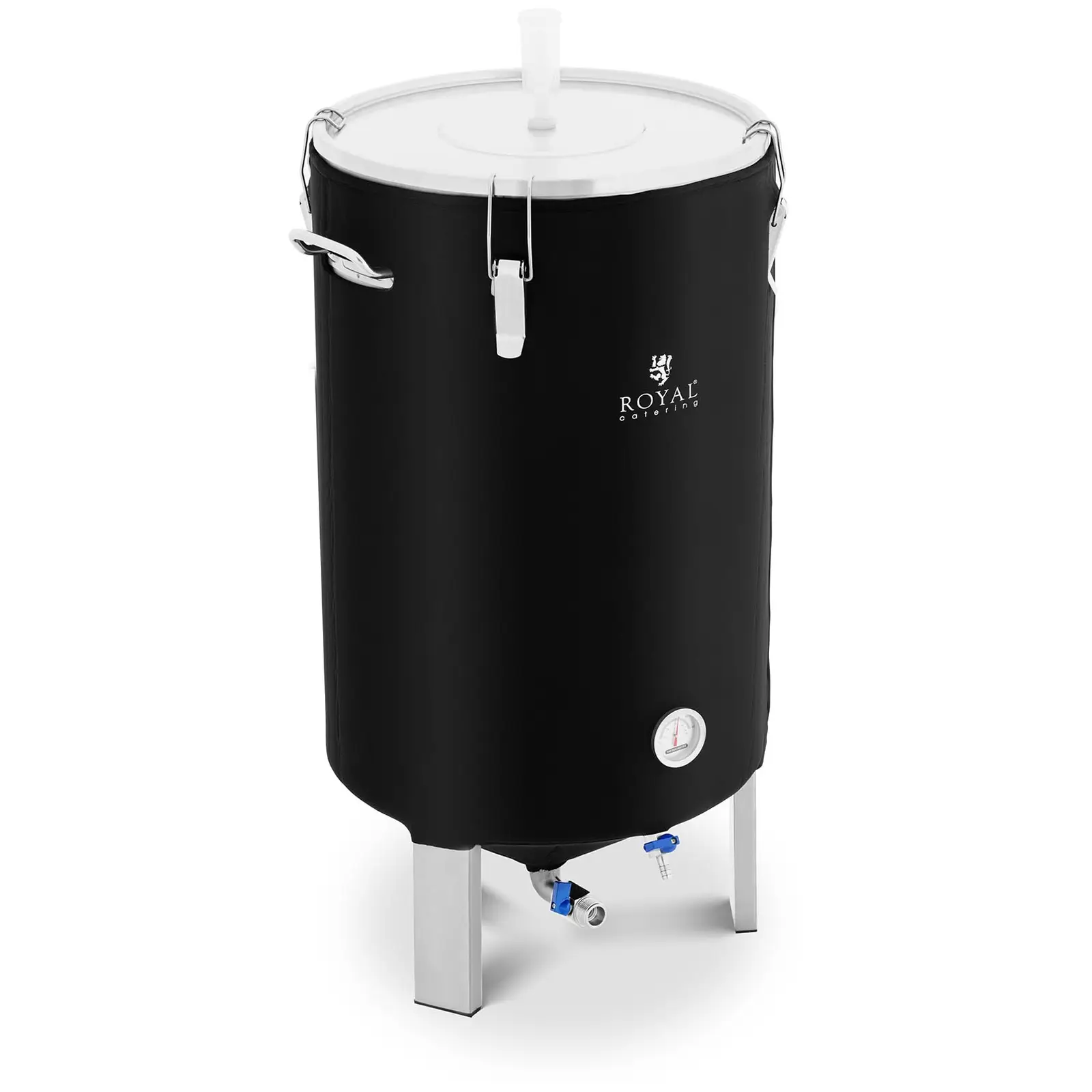Beer pasteurization is a process that plays a key role in the production of this popular drink, influencing both its durability and characteristic taste characteristics. First introduced by Louis Pasteur, this method is used to eliminate microorganisms that can affect the quality and safety of beer. In this article, we will discuss what exactly pasteurization is, what its types are and what are the differences between pasteurized and unpasteurized beer. We will also tell you how to pasteurize beer at home.

Beer pasteurization is a process that plays a key role in the production of this popular drink, influencing both its durability and characteristic taste characteristics. First introduced by Louis Pasteur, this method is used to eliminate microorganisms that can affect the quality and safety of beer. In this article, we will discuss what exactly pasteurization is, what its types are and what are the differences between pasteurized and unpasteurized beer. We will also tell you how to pasteurize beer at home.
- What is beer pasteurization?
- Pasteurized beer vs. unpasteurized beer
- Types of beer pasteurization
- Home-made beer pasteurization – step by step
- The impact of pasteurization on the taste and freshness of beer
- Beer expiration date and pasteurization method
- The importance of pasteurization for the brewing industry
What is beer pasteurization?
Beer pasteurization is a thermal process whose aim is to destroy microorganisms that may affect the quality and durability of the drink. The process involves heating the beer to a temperature that is high enough to kill most bacteria and yeast, but at the same time low enough not to spoil the taste and aroma of the beer. Typically, beer is heated to a temperature of around 60-72 degrees Celsius for a few seconds to a few minutes, depending on the pasteurization method. Once the process is complete, the beer is quickly cooled to stop further heat exposure and maintain the freshness and quality of the product. Thanks to pasteurization, producers can extend the shelf life of beer, minimize the risk of infections, and ensure batch consistency of the product delivered to consumers.
Pasteurized beer vs. unpasteurized beer
Debate on the advantages and disadvantages of pasteurized beer vs. unpasteurized beer mainly concerns two aspects: durability and taste:
Pasteurized beers
Pros:
- Longer shelf life: Pasteurization kills microorganisms that can lead to beer spoilage, so pasteurized beer can be stored longer without the risk of loss of quality.
- Stability: Pasteurized beer is more resistant to temperature changes and other storage conditions, which is beneficial when transporting and distributing over longer distances.
- Flavor consistency: This method produces a more uniform product, which is important for large commercial breweries producing beer on a large scale.
Cons:
- Possible change in taste: The pasteurization process can affect the subtle flavor notes of the beer, slightly changing its characteristic properties.
- Costs: The pasteurization process requires additional brewing equipment and labor, which may increase production costs.
Unpasteurized beers
Pros:
- Fuller, livelier flavor: The lack of pasteurization preserves all of the beer’s natural characteristics, including yeast and other ingredients that can continue to evolve and develop flavor after bottling.
- Authenticity: Beer lovers often appreciate unpasteurized beers for their traditional, artisanal character and depth of flavor that cannot be achieved in pasteurized products.
Cons:
- Shorter shelf life: Unpasteurized beers are more susceptible to microbiological infections, which shortens their shelf life.
- Sensitivity to storage conditions: They require more controlled storage conditions, especially at low temperatures, to prevent spoilage and maintain quality.
Types of beer pasteurization
There are two main types of beer pasteurization, which differ in the methods of heat application and the impact on the final product:
Flow pasteurization
- This is a process in which beer flows through a system of pipes where it is quickly heated to a high temperature, usually between 71 and 74 degrees Celsius, for a short time – from a few seconds to a few minutes. The beer is then immediately cooled to a lower temperature. This method minimizes changes in the taste and smell of the beer because the beer is only exposed to high temperatures for a short time.
- This is a popular method in modern and large breweries because it allows for quick and effective pasteurization of large amounts of beer in a short time.
Tunnel pasteurization
- In this method, closed bottles, cans, or beer kegs are transported through a long tunnel where they are gradually heated using hot water or steam and then cooled down just as gradually. The temperature and exposure time are carefully controlled to achieve the appropriate level of pasteurization.
- Tunnel pasteurization is often used in smaller breweries or to produce beers with more delicate flavor profiles. This is a slower process than flow pasteurization and may lead to greater changes in beer characteristics, but is effective in maintaining microbiological stability.
In addition to flow and tunnel pasteurization, which are the most common methods of beer pasteurization, there are several other techniques that can be used in specific cases:
Batch pasteurization
- In this method, beer is pasteurized in large tanks, where it is heated and held at a specific temperature for an extended period of time, usually from 30 minutes to several hours. After pasteurization, the beer is cooled and poured into bottles, cans, or kegs. This method is less efficient than flow or tunnel pasteurization in terms of energy consumption and time but can be beneficial for small breweries that produce small quantities of beer or special editions of beer.
Pasteurization by microfiltration
- Although technically not a pasteurization method in the strict sense, microfiltration is an alternative way to remove microorganisms from beer. The beer is passed through very thin filters that remove bacteria and yeast without requiring the use of heat. This method preserves most of the beer’s natural properties because it is not exposed to high temperatures, which can be advantageous in the production of very delicate or specialized beers.
Each of these methods has its advantages and disadvantages and may be better adapted to different types of beer or producer requirements. Choosing the appropriate method depends on many factors, including the specific characteristics of the beer to be pasteurized, the brewery’s production capacity, and the priorities related to product quality and durability.
Home-made beer pasteurization – step by step
Pasteurization of homemade beer is a process that can significantly increase its shelf life. Here is a step-by-step guide on how to pasteurize beer at home:
Equipment Preparation: Make sure all beer bottles are tightly closed and there are no leaks. You will need a large pot large enough to fit the bottles and a thermometer to monitor the water temperature.
Filling the pot with water: Place the bottles in the pot, then gently fill it with water until the water level is about 3/4 of the height of the bottles. It is important that the water is cold to avoid the risk of cracks.
Heating the water: Heat the water slowly. The ideal temperature for beer pasteurization is around 60-75 degrees Celsius. Monitor the water temperature with a thermometer. Do not let the temperature exceed 80 degrees Celsius as this may affect the quality of the beer.
Maintaining temperature: Once you have reached the desired temperature, maintain it for approximately 10 to 30 minutes, depending on the initial gravity and alcohol content in the beer.
Cooling: Once pasteurization is complete, disconnect the heat source and allow the water to slowly cool down along with the bottles. You can also remove the bottles and place them in cold water to speed up the cooling process. Careful cooling is key to avoid thermal shock.
Storage: Once cooled, the bottles are ready for storage. Store them in a cool, dark place to minimize the risk of flavor changes caused by light and temperature.
Pasteurization of home beer is best carried out after the fermentation process is completed and bottling, but before long-term storage. It is important to ensure that fermentation is complete to avoid excessive pressure building up in the bottles, which could cause them to burst during pasteurization. After pasteurization, the beer is technically ready to drink, but many people prefer to let it “mature” for a few weeks or even months so that the flavors can better integrate and stabilize.
The impact of pasteurization on the taste and freshness of beer
Pasteurization has a significant impact on the taste and freshness of beer, introducing changes that can be perceived both positively and negatively by different consumers.
The influence of pasteurization on the taste of beer
- Reducing the intensity of aromas: During pasteurization, high temperatures can result in the loss of volatile compounds that contribute to the rich and complex aroma of beer. This can make pasteurized beer seem less flavorful compared to its unpasteurized counterparts.
- Changes in Flavor Profile: The heat used during pasteurization can slightly modify the flavors found in the beer, introducing a “cooked” or “overheated” flavor that is not present in unpasteurized beer. Such changes can affect subtle notes that are appreciated by beer lovers.
Impact on beer freshness
- Longer shelf life: While pasteurization may slightly change the flavor profile of the beer, it also contributes to much greater stability and shelf life of the product. Eliminating microorganisms responsible for beer spoilage allows for longer storage and reduces the risk of taste changes caused by bacteria.
- Beer consistency: Pasteurized beer has a more uniform flavor across batches. This is especially important for larger breweries that need to maintain flavor consistency on a mass scale.
Beer expiration date and pasteurization method
The expiration date of beer is closely related to the pasteurization method used during its production. Flow and tunnel pasteurization effectively destroy microorganisms, extending the shelf life of beer up to a year or longer, provided it is properly stored.
Batch pasteurization gives a slightly shorter shelf life due to the lower intensity of the process, but still provides several months of stability. In turn, microfiltration, although not a pasteurization technique, also eliminates microorganisms and extends the shelf life of beer, while maintaining its freshness and flavor properties.
The importance of pasteurization for the brewing industry
Pasteurization plays a key role in the brewing industry, ensuring both product safety and durability, which is important for the scale of production and distribution range of beer. This process eliminates microorganisms that may cause the beer to spoil or affect its quality, which is extremely important when the beer is intended for wide distribution on the domestic or international market.
Thanks to pasteurization, breweries can ensure the uniformity and consistency of their products. Beer, regardless of where it is located, has the same taste, which is crucial to maintaining customer loyalty and brand image.
Pasteurization also allows breweries to extend the shelf life of beer, which benefits both consumers and distributors. A longer shelf life of beer enables more effective inventory management and reduces losses resulting from expired products.
Pasteurization is an important element of the production strategy of most large breweries, allowing the safe and effective delivery of brewing products on a mass scale. For smaller breweries, the decision to pasteurize may depend on their specific market goals and on the preferences of customers, who often value beer for its freshness and natural taste.










Share